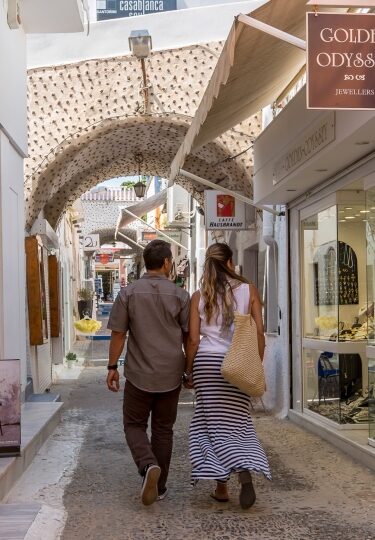To say that Fira, Greece, is picture-perfect is no hyperbole. The capital of Santorini—the Rolls-Royce of the Greek Islands—is perched on caldera cliffs formed thousands of years ago following a cataclysmic volcanic eruption.
Spilling over the island’s western edge like a sprinkling of sugar cubes, Fira (or Thira, as it’s sometimes spelt) is small, but hopping, and is best known for its whitewashed houses and blue-domed churches. Buzzy tavernas, cocktail bars, ancient treasures in museums, and winding cobbled streets lined with boutiques add to the charm of this clifftop spot.
Santorini is beguiling and mythic, with Fira at its modern-day heart. Here is everything you need to know about visiting on vacation.
Why Visit Fira, Greece
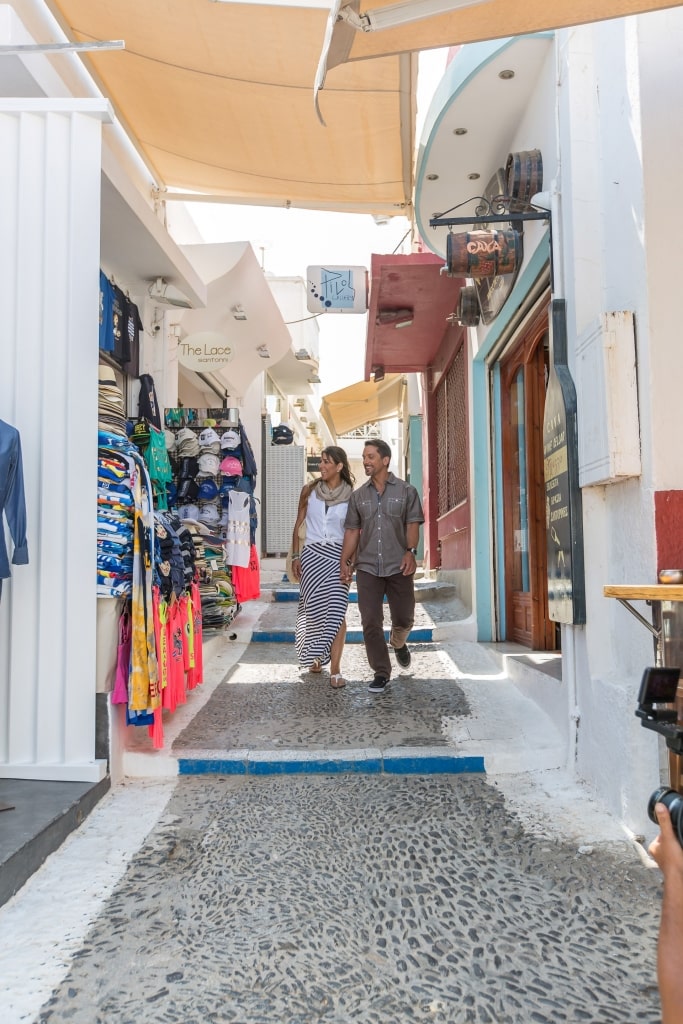
Fira
It’s easy to see why Fira—indeed, the whole of Santorini—has captured the imagination of travelers for decades.
The contrast of the sapphire-blue sea that surrounds the island with Fira’s dazzling white buildings carved into the volcanic landscape is hypnotic. It’s also a glamorous and lively base, with restaurants, bars, and cafés aplenty.
Located atop towering black cliffs that plunge into the sea, Fira offers travelers a wonderful dose of Mediterranean sunshine. There’s more, with beautiful churches and chapels, exceptional museums, and some of the island’s best shopping.
Another draw is Fira’s walkability. Compact enough to explore on foot, it’s easy to cover plenty of ground on a short visit. Fira is also angled over the wide-open caldera, offering dramatic views of the islands of Palaia Kammeni and Nea Kameni.
History & Culture of Fira
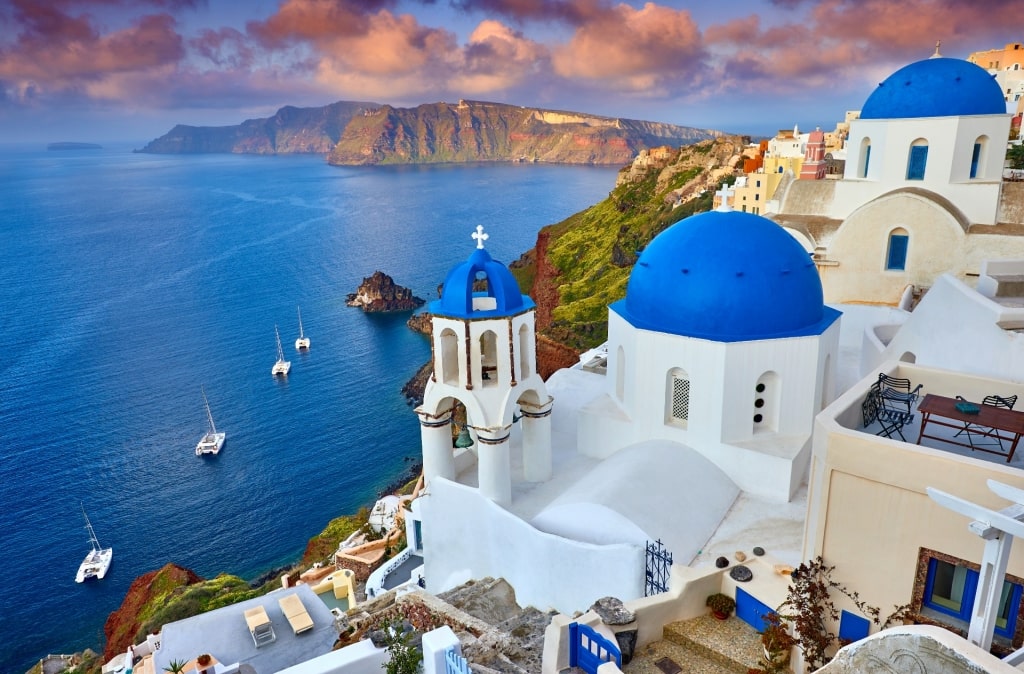
Fira
Some 4,000 years ago, the sophisticated Minoan civilization lived on Santorini, an enormous volcano, driven away around 1600 BC by the cataclysmic eruption that caused the island as it was to collapse into the caldera formation we see today.
In more recent times, the Byzantine Empire, the Venetian Republic, and the Ottoman Empire have all laid claim to Santorini, with the island’s capital previously at the fortified Skaros, a short distance north of Fira.
During the late 18th century, following a period of continued earthquakes, much of Skaros’ population moved south to Fira, which led to it becoming the island’s new capital.
Fira hasn’t been spared from the impact of Santorini’s earthquakes, however, with many buildings either destroyed or damaged as a result of the 1956 Amorgos earthquake. Following this, most of Fira’s buildings, including its churches and public buildings, were rebuilt or extensively renovated.
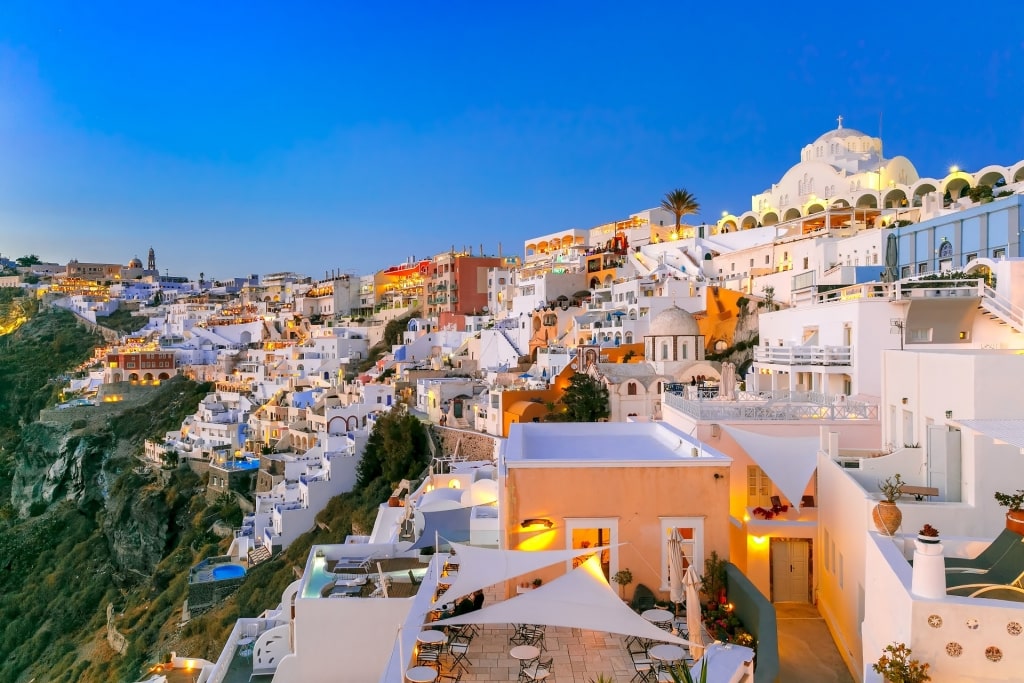
Fira
Fira is peppered with cave houses as seen at the town’s Folklore Museum. These inexpensive houses, built by the town’s growing population, were either dug entirely into the volcanic rock or partially into the rock and whitewashed.
The architecture of Fira is also dominated by its gleaming Greek Orthodox and Catholic churches that are a symbol of the island.
The Ifestia Festival, taking place every August, celebrates the island’s volcanic landscape with fireworks, concerts, and dance performances, while religious festivals take place throughout the year with parades and other festivities.
Wildlife & Nature
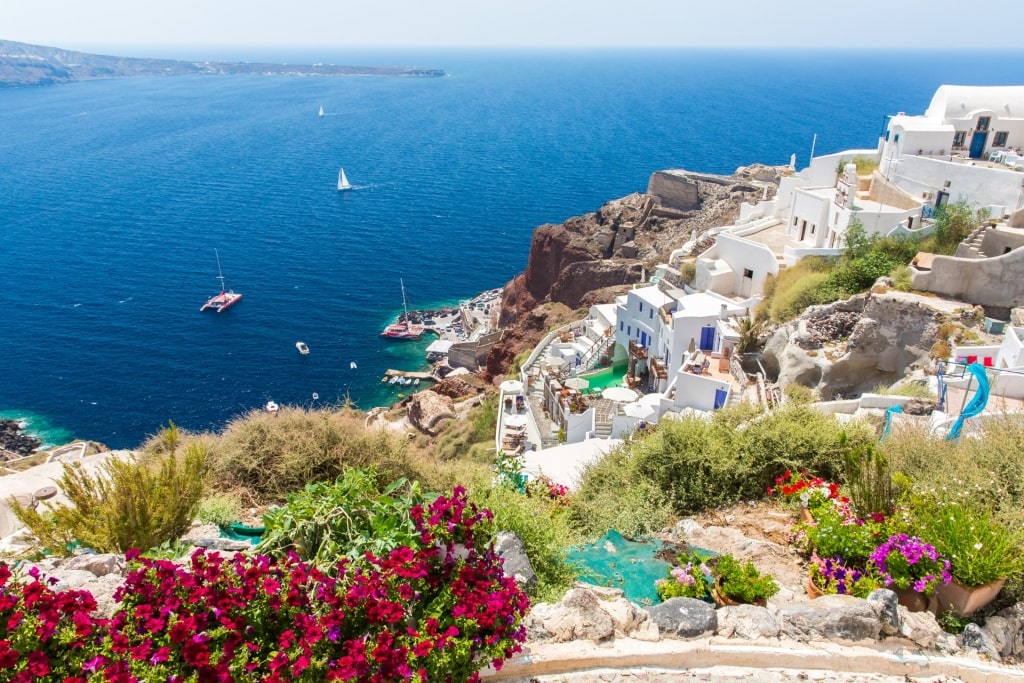
Fira
Nature in Fira town itself is largely limited to the hot-pink bougainvillea and prickly pear that adorn the whitewashed walls. The surrounding landscape, however, is filled with an abundance of thrilling nature, centered around Santorini’s sunken caldera.
There are volcanic Greek beaches, leafy olive groves and vineyards, and deep-blue water filled with marine life. It’s possible to witness parrotfish, octopus, grouper, barracuda, sea urchin, sea horse, and swishy seagrass meadows among the sea life within the caldera’s vibrant reefs.
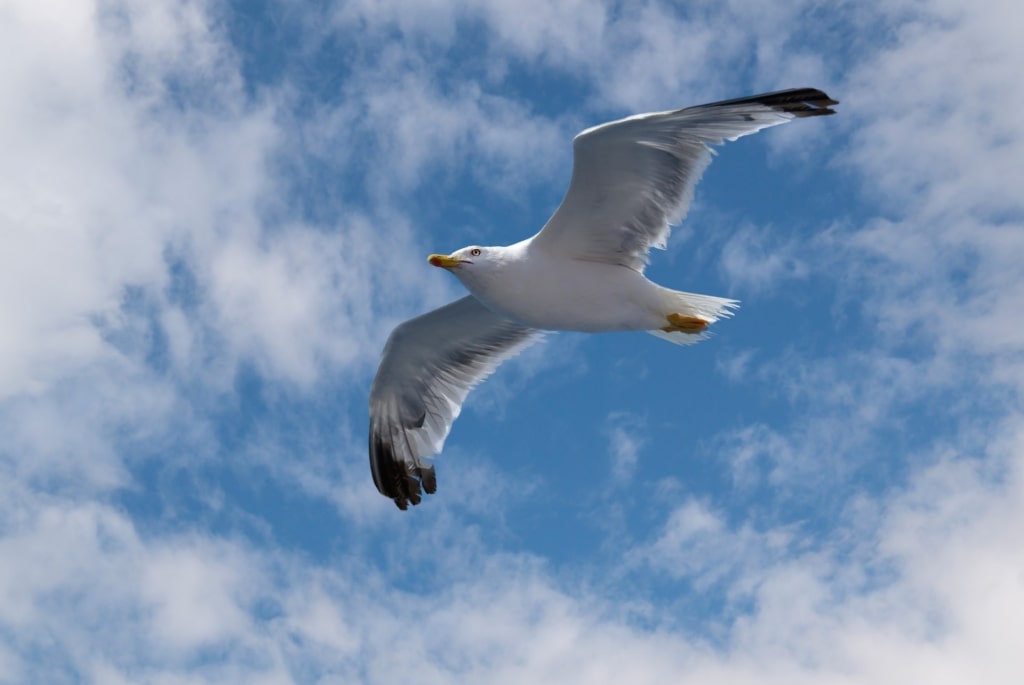
Seagull
On a mood-lifting springtime hike towards Oia in the north of Santorini, look out for swooping birdlife such as rock doves, house sparrows, quails, seagulls, and swallows. With no designated bird-watching spots on the island, look for bird life near tall cliffs, away from more built-up areas.
Tips for Visiting Fira, Greece
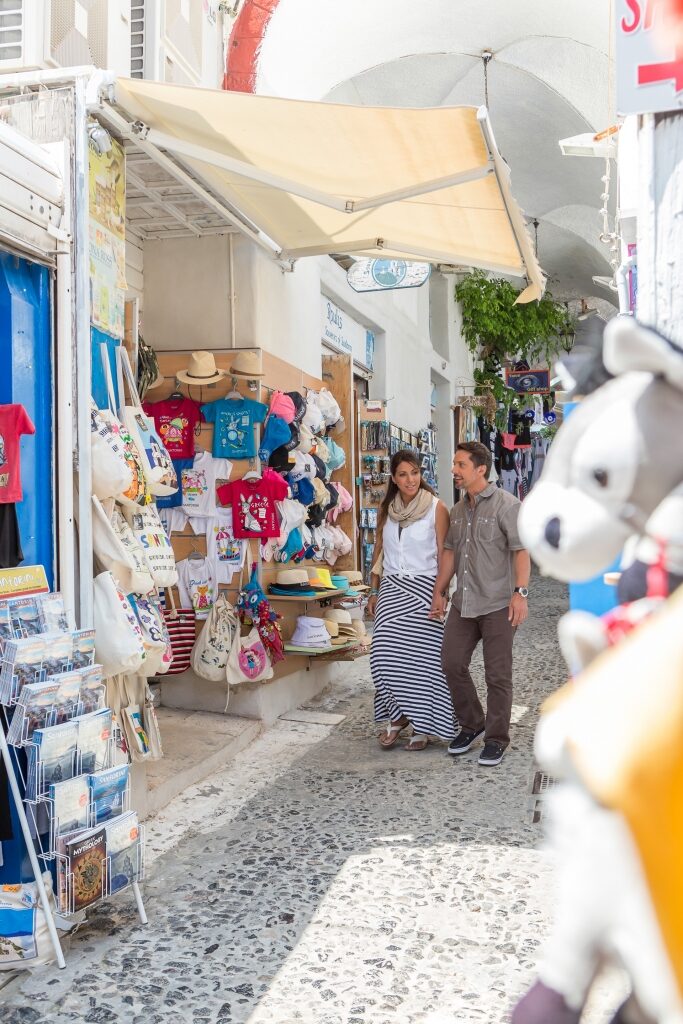
Fira
With some careful planning, it’s easy to loop in some of Fira’s famous churches, walk the town’s pretty streets, shop a little, and savor the region’s delightful gastronomy in one visit.
For some of the best views of the azure sea and Santorini’s breathtaking volcanic coastline, plot a visit to Skaros Rock. It was the capital of Santorini until Fira took that role in the 18th century.
Jutting out into the Aegean Sea, this rocky headland in the village of Imerovigli is walkable from Fira in around 45 minutes.
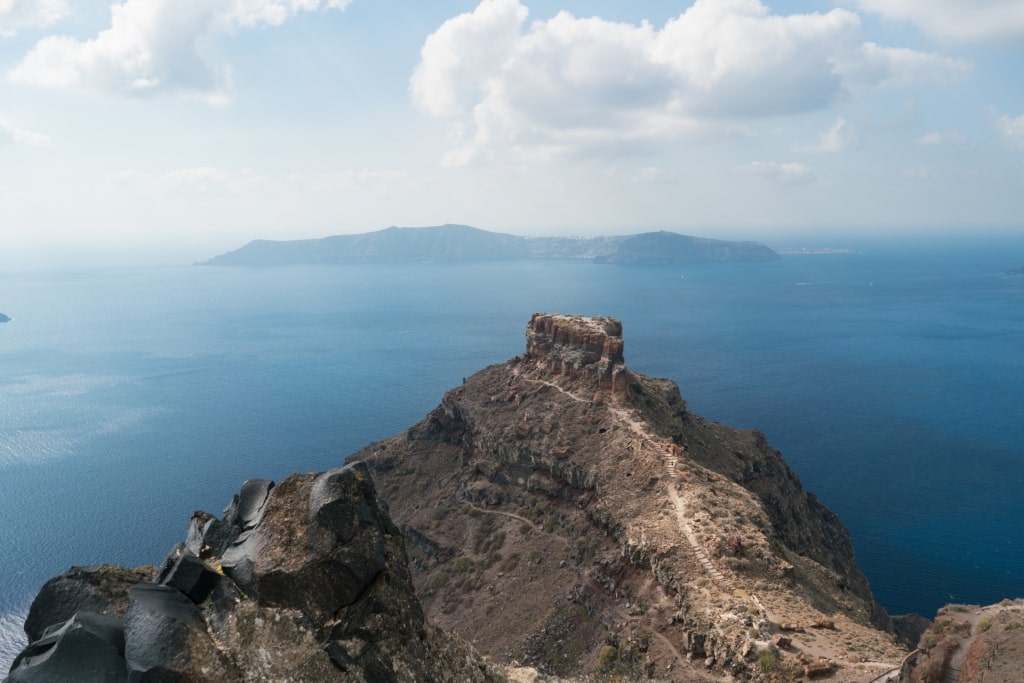
Skaros
This former castle that now lies in ruins was devastated as a result of an earthquake in the 19th century. Follow the trail from Imerovigli’s quaint Agios Georgios chapel to reach Skaros.
You’ll need to be fairly fit since the final part of the walk involves steep steps. Hikers are rewarded with some of the best views of Fira and the surrounding landscape.
You could go further and seek out the Church of Panagia Theoskepasti, tucked below the Skaros, carved into the cliffs.
If you don’t feel like walking the entire way, hop on the local Fira to Oia bus. It’s just four stops from Fira’s central bus station to Imerovigli and takes 30 minutes. It’s always worth informing your driver of the stop you intend to get off at as you board the bus.
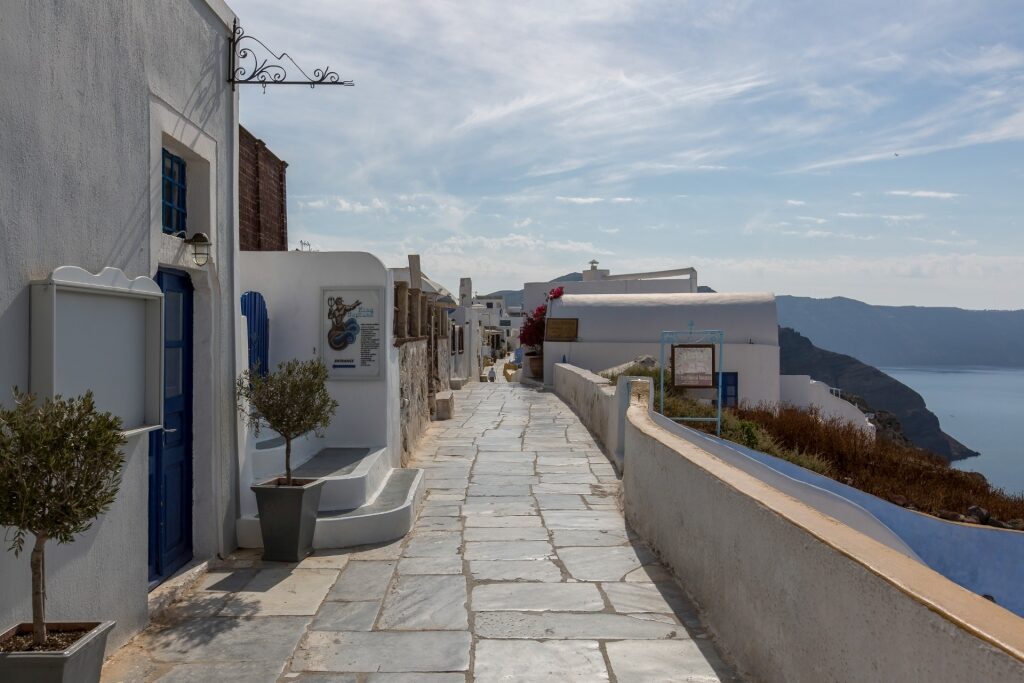
Oia
For one of the best hikes in Greece, extend your route further, still, along the Fira-Oia coastal path. This six-mile stretch is often challenging, though worth it for the spectacular scenery.
You’ll want to wear comfortable footwear for navigating hilly paths, including the zigzag trail from Santorini Old Harbor to the town, or to Skaros Rock.
One of the most spectacular sights in Fira is sunset, so if time permits, be in position in one of the clifftop bars. Many play classical music, which adds to the atmosphere.
Things to Do & Attractions
Take the Stairs or Cable to Car to Santorini Old Harbor
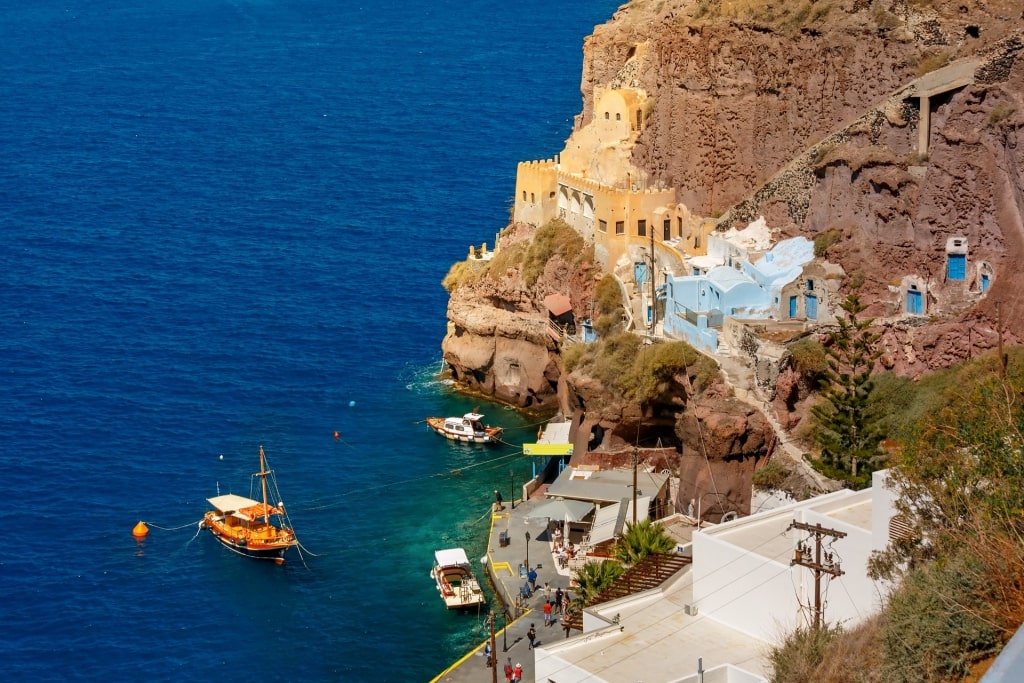
Santorini Old Harbor
Taking Fira’s cable car 722 feet down to the quaint Old Harbor is one of the best things to do in Santorini. If you’re more of an active traveler, consider taking the 588 steps, known as the Karavolades Stairs, which twist and turn up the side of the caldera.
Either way, you’ll be treated to extraordinary Cyclades views on the way up or down. Watch out for chains of mules and donkeys that clatter up and down the shallow steps; some people choose to ride rather than walk.
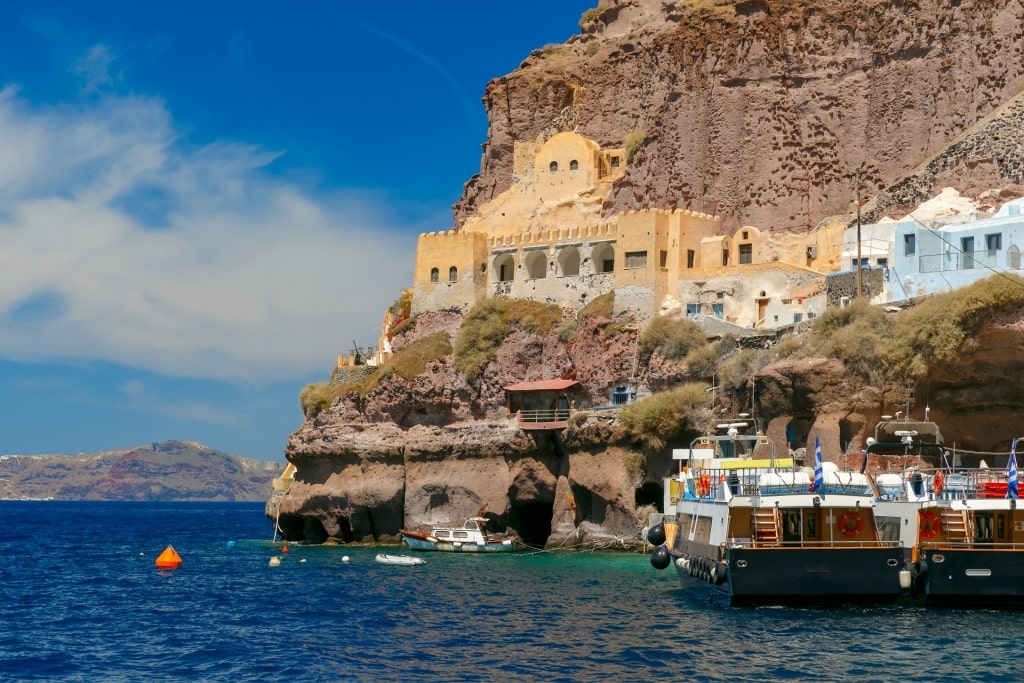
Santorini Old Harbor
Despite its tranquil image, all bobbing boats and a handful of tavernas, the Old Harbor is busy with travelers arriving on ferries and other ships during summertime. With this in mind, aim to go first thing to beat the crowds.
Down on the seafront, enjoy a relaxed wander along the harbor and stop for a cold beer in one of the tavernas, watching all the comings and goings.
Learn About the Island’s History at Fira’s Museums
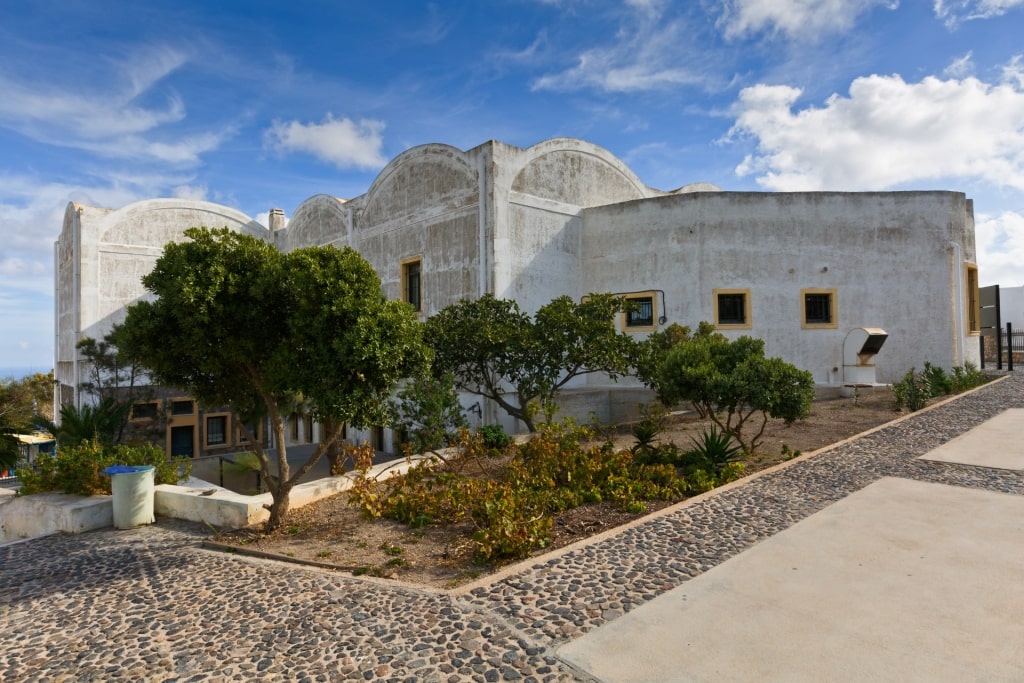
Museum of Prehistoric Thera
Trawl Fira’s small Museum of Prehistoric Thera to explore relics unearthed from Ancient Thera, known to have been inhabited by the Minoan civilization, much of which was wiped out by the devastating shape-shifting early volcanic eruptions, known as the Minoan eruption.
The Museum of Prehistoric Thera is divided into four exhibition areas covering different periods in the island’s history and its geology. Among the earliest artifacts on display is Neolithic pottery, including a remarkable 4,000-year-old vase.
A five-minute walk north will lead you to Megaro Gyzi Museum near Fira’s cathedral. Sixteenth-century drawings, folk dresses, and historic Cyclades maps help visitors delve into more of Santorini’s history and culture.
Don’t miss the photography collection, which explores Fira before and after the 1956 volcanic eruption.
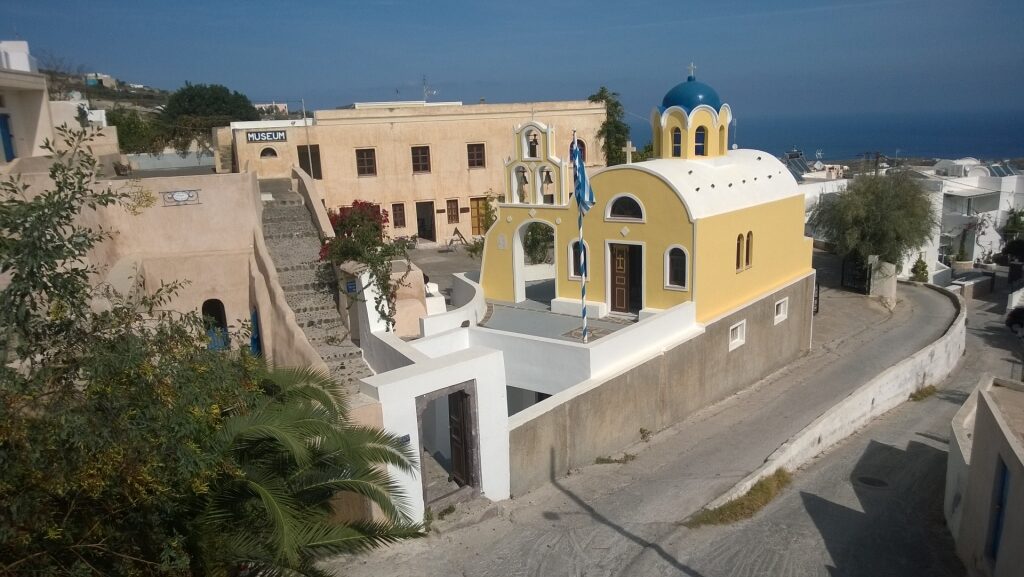
Emmanuel A. Lignos Santorini Folklore Museum Photo by Jan M on Wikimedia Commons, licensed under CC BY-SA 3.0
Lastly, step inside the Emmanuel A. Lignos Santorini Folklore Museum set within an unassuming two-story cave house that was built in 1861.
The museum showcases just how a traditional home once appeared, with art and antiques from Fira’s bygone era. There’s also an art gallery and workshop spaces for pottery and other crafts.
Sail in the Sunken Caldera From the Old Harbor
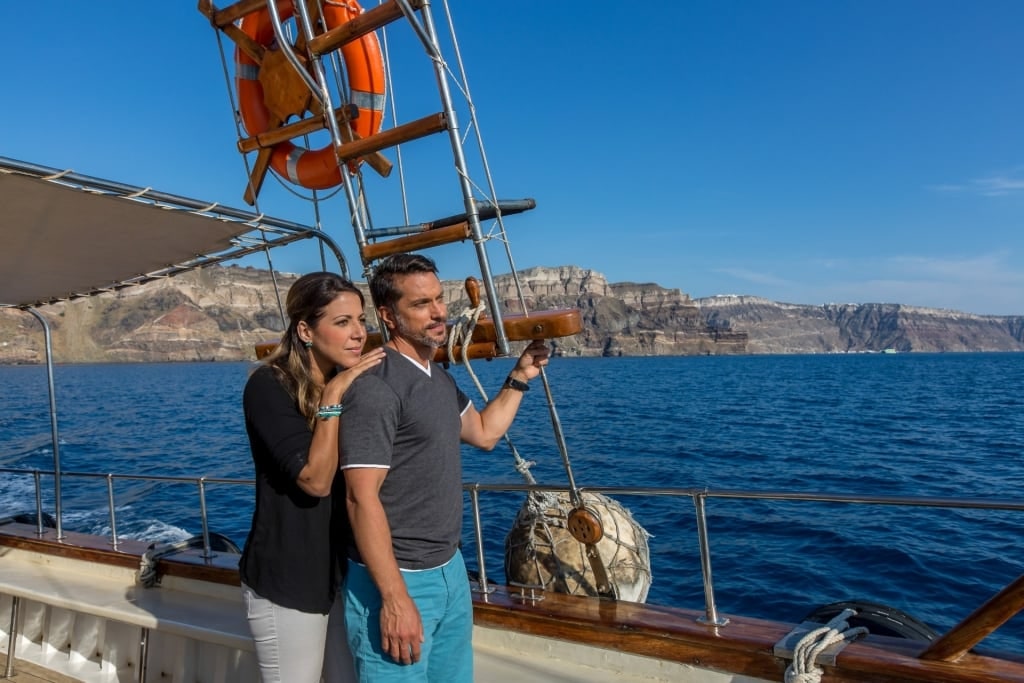
Boat to Palea Kameni
Join a boat trip from Santorini Old Harbor to discover the submerged caldera and volcanic islands of Nea (New) Kameni and Palea (Old) Kameni. Nea Kameni is an active volcano—some even theorize it as the site of the lost city of Atlantis.
Boats and ferries depart regularly from the seafront, taking you into the heart of the caldera and the islands’ steaming sulfur springs where you can bathe in natural mud and swim in the deliciously warm sea. You could also hike the lunar-like Nea Kameni Volcanic Park to its crater.
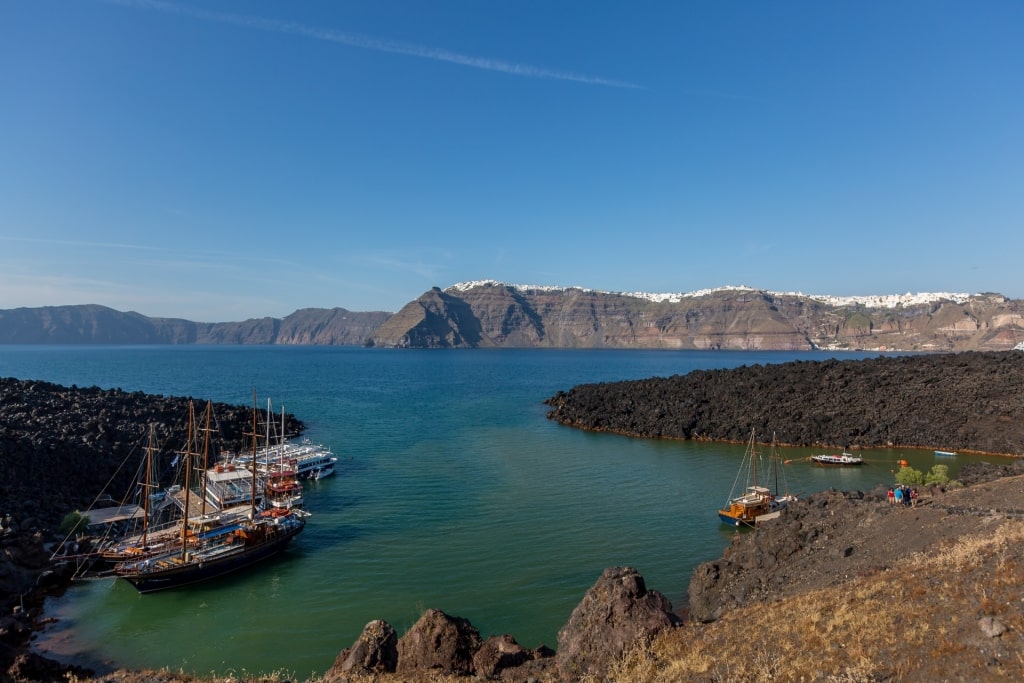
Palea Kameni
Some of the boat tours from the Old Harbor also continue to the inhabited island of Thirassia, also within the Santorini archipelago.
Both Nea Kameni and Palea Kameni remain uninhabited, though there is a tiny white chapel, St. Nicholas Church, on Palea Kameni.
Pack a picnic and water as there are no restaurants on Nea Kameni or Palea Kameni.
Explore Glorious Churches
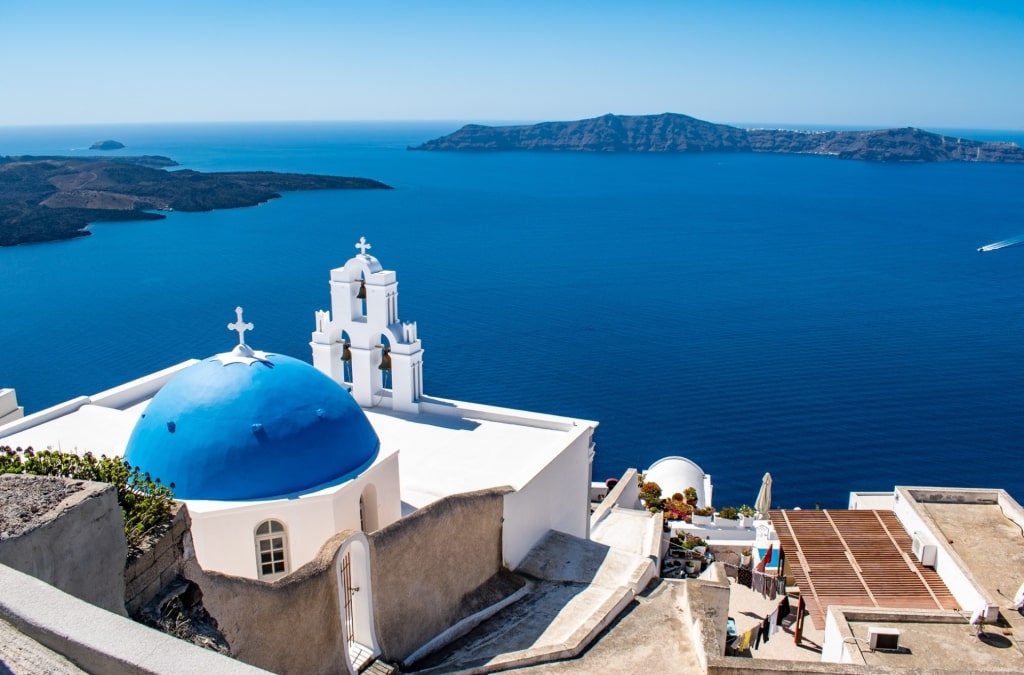
Church of Agios Gerasimos
Fira, Greece, is famous for its many cliff-hugging, chalk-white churches. One of the most famous is the Three Bells of Fira, with its gleaming blue dome and three bells adorning the front elevation.
Though the church dates back to the 18th century, it was renovated following the earthquake of 1956.
For the perfect cinematic shot of the Three Bells of Fira, head to the roadside above and behind the church. This is one of the popular locations where visitors gather to watch Santorini’s famous sunsets.
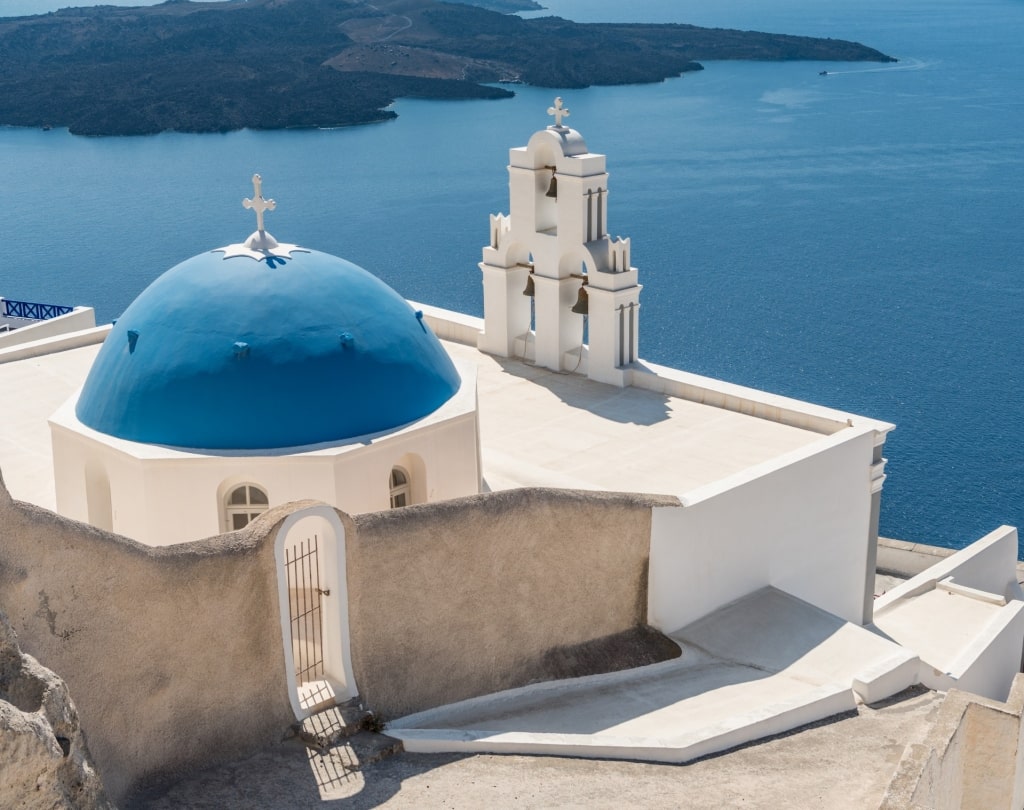
Church of Agios Gerasimos
The town’s Church of Agios Gerasimos is another snow-white, blue-domed showstopper, just moments from the Three Bells of Fira.
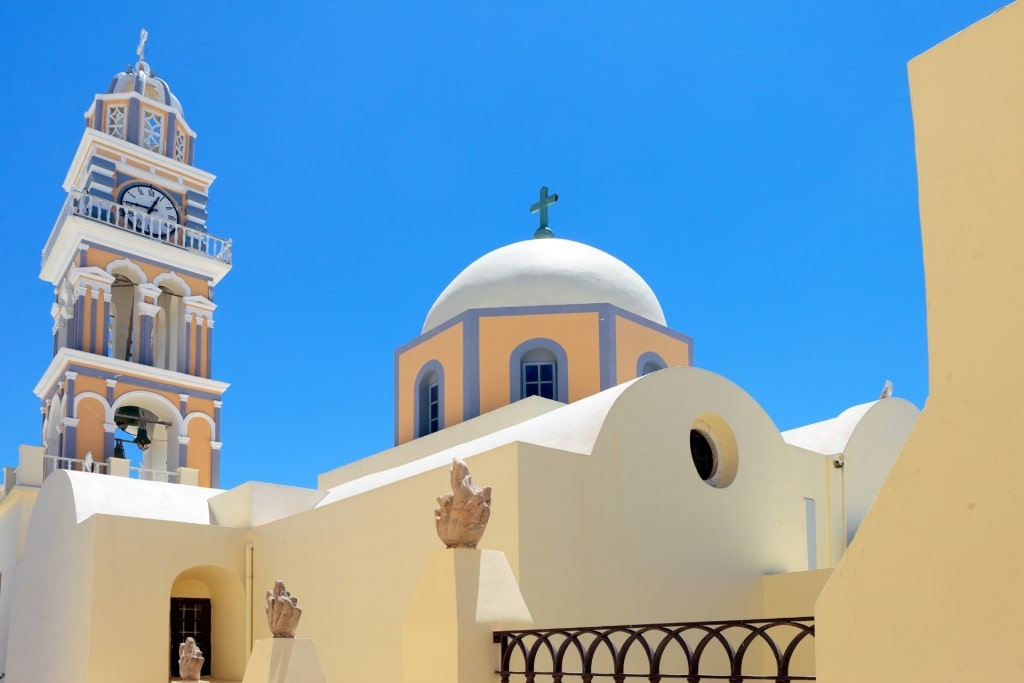
Cathedral of St. John the Baptist
In the center of Fira, the Catholic Cathedral of St. John the Baptist is another good-looking church. The exterior features an immaculate peach and baby-blue exterior with a tall clock tower, while inside there’s a lilac blue-domed ceiling and an elegant chandelier.
The 1827-built Orthodox Metropolitan Cathedral of Thira is another beautiful church sitting in a prime position to view the volcano. Its features include rolling white arches, a bell tower, and impressive mosaic detail on the outside. Step inside to marvel at the frescoes by local artist Christoforos Asimis.
Stroll Fira’s Picturesque Streets
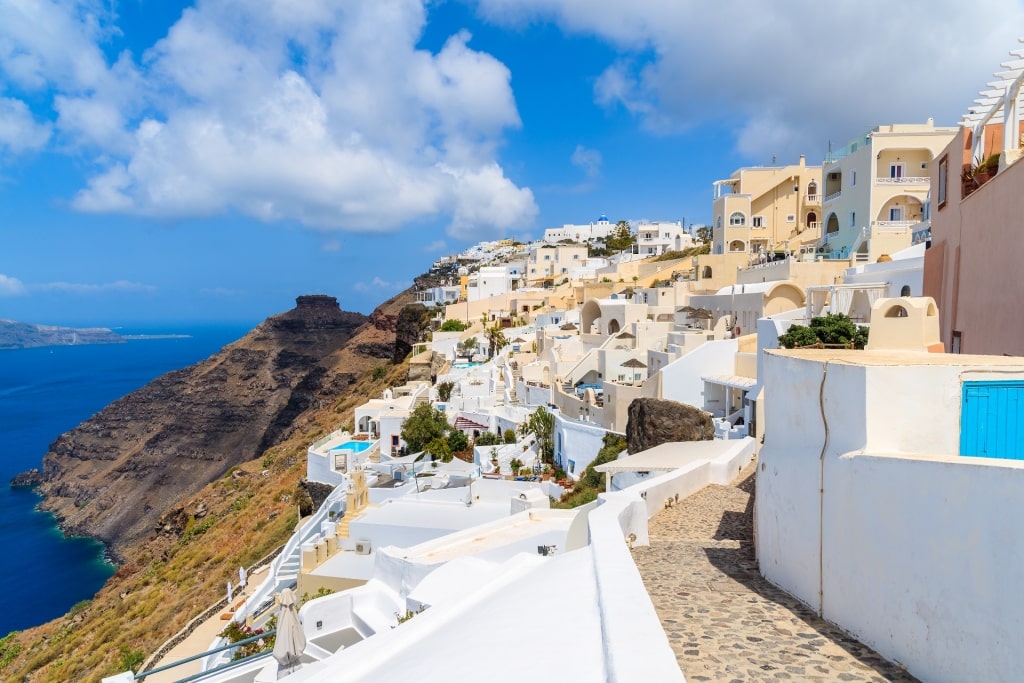
Firostefani
Wandering the narrow winding streets among the town’s uniform of whitewashed walls, blue-painted doors, and flowering cacti is one of the best things to do in Fira.
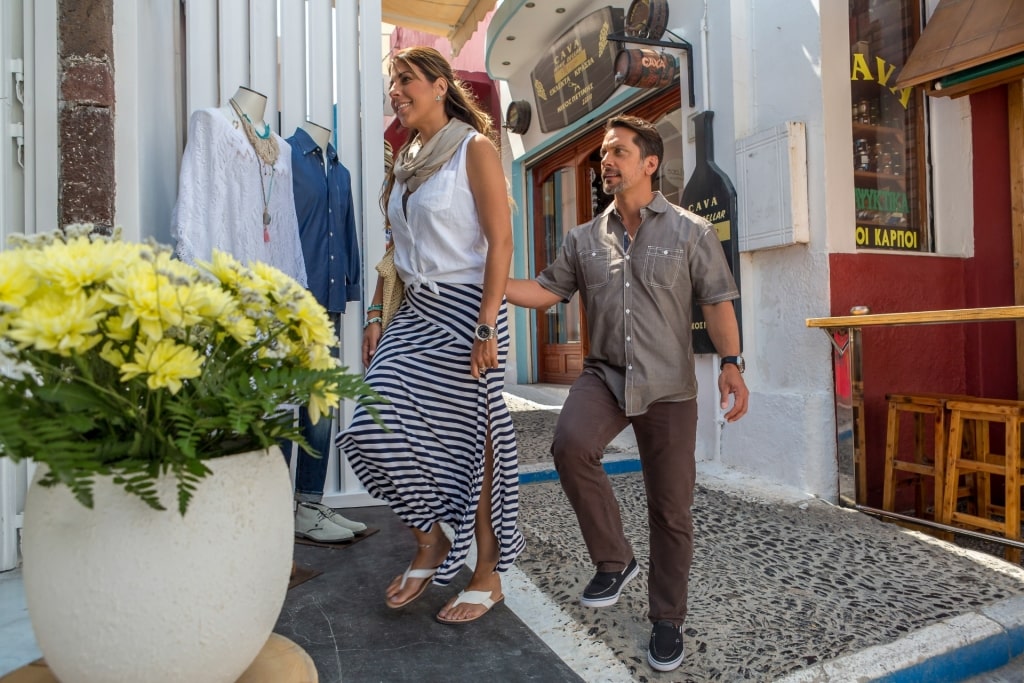
Fira
Take in the town’s two main squares, Theotokopoulos and Firostefani Central Square. Peek at the dazzling Aegean Sea through gaps between buildings as you browse the town’s galleries and boutiques.
Enjoy a gelato from one of the many vendors before relaxing at a cocktail bar or restaurant. There are plenty to choose from that offer fantastic sea views.
Try Volkan On The Rocks, which serves frapés, cocktails, local wines, and beers, along with an excellent lunchtime menu of Greek cheeses, mezze, and fresh salads.
Shop for Local Souvenirs
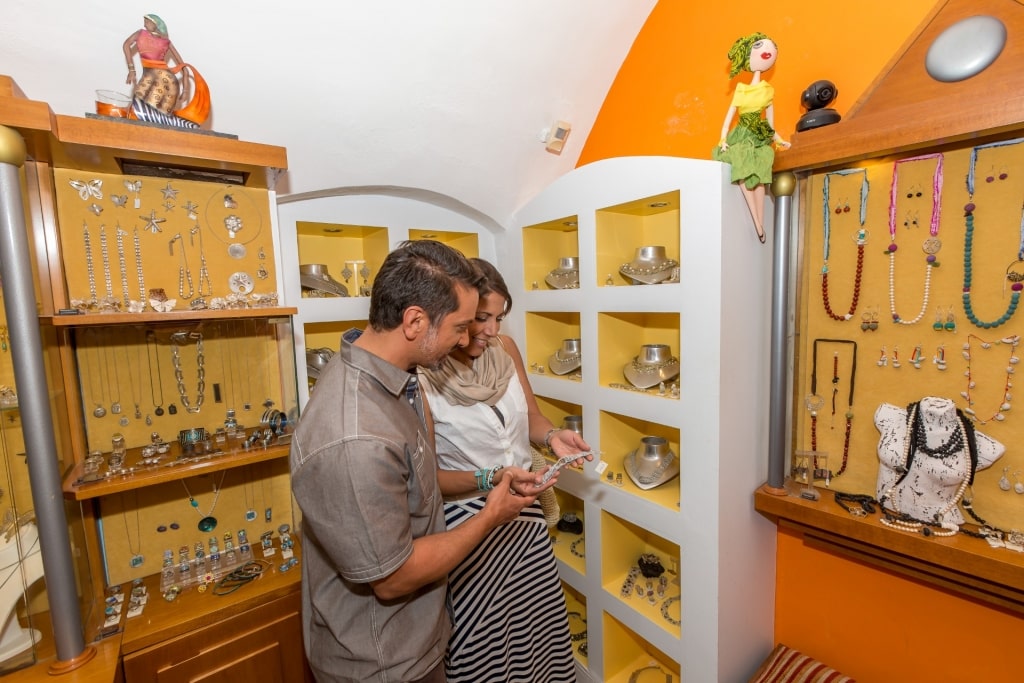
Shop in Fira
If you enjoy shopping for souvenirs on vacation, you’re in luck in Fira, a failsafe spot with fashion, jewelry, trinkets, ceramics, and local artwork on offer.
If you have a penchant for jewelry, take your credit card to Odos Ipapantis, nicknamed Gold Street, for its many jewelry stores. Several offer designs inspired by the styles of ancient Greece. La Bohème, sandwiched between the town’s buzzy cocktail bars, is a wonderful destination for homeware and fashion items.
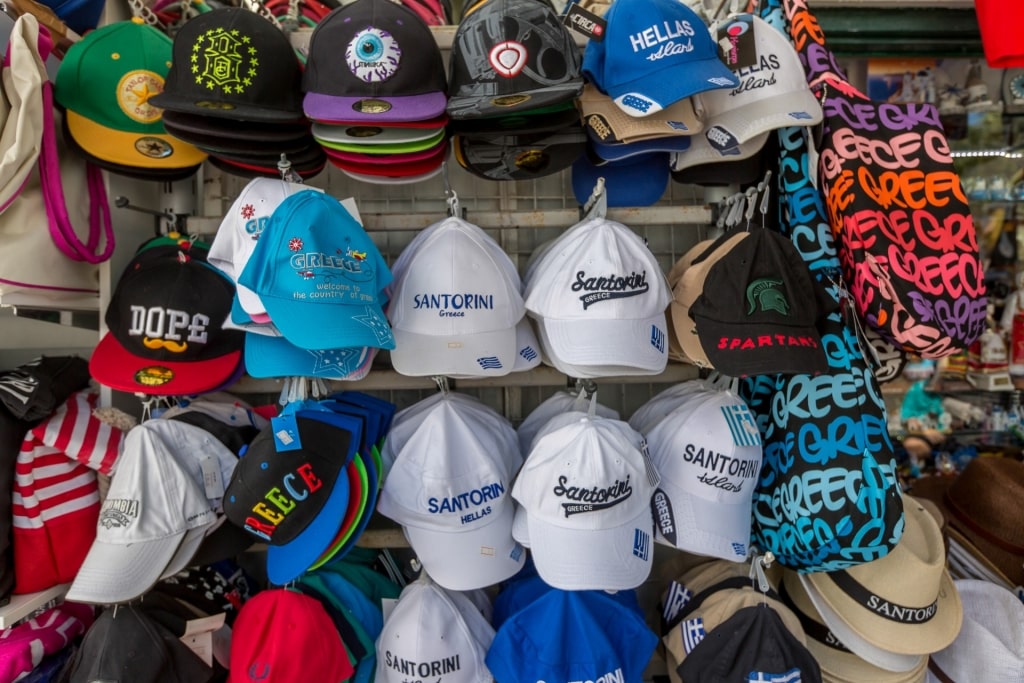
Souvenir shop in Fira
Browse the fashion, swimwear, and accessories at Kisira and NOI, and pick up a beautiful summer dress at Spicy Boutique. Greek brand Harris Cotton is the go-to for beautiful linen and cotton pieces.
For prints, handmade jewelry, and small sculptures with a sea theme, browse Mati Art Gallery. For more one-off souvenirs from Greece for the home, explore the oil paintings, ceramics, glass and bronze pieces at Art of the Loom.
Food & Drink
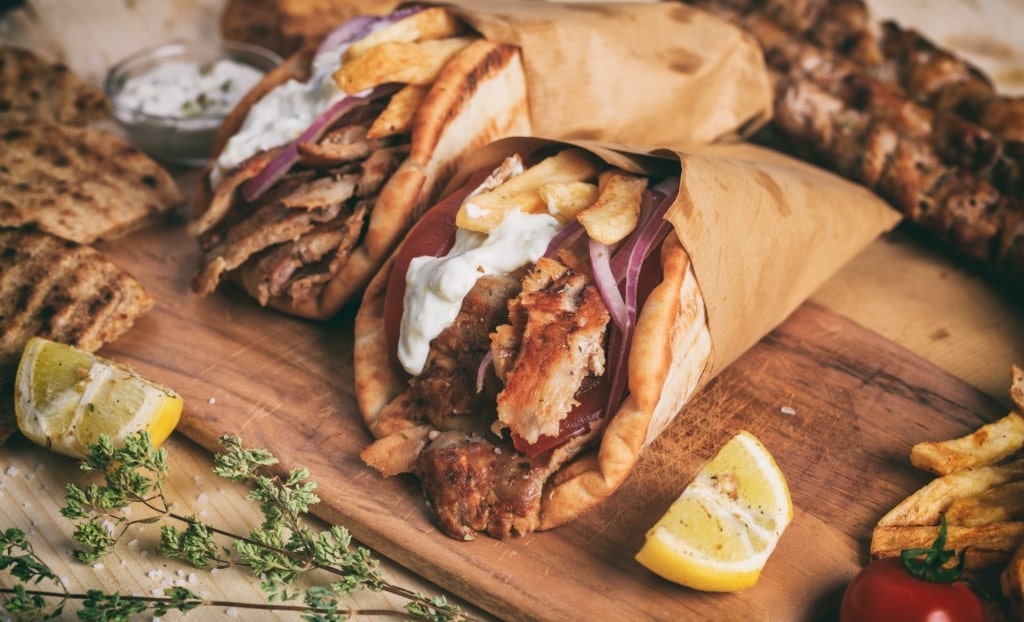
Gyro
Greece is known for its food, and pausing to enjoy Fira’s gastronomy is essential on a visit to Santorini. Dining in Greece is a leisurely affair designed to be savored with friends and family.
Fresh just-caught seafood, including tuna, squid, octopus, mussels, and shrimp, is a common theme at Fira’s tavernas. Island-grown tomatoes, fava beans, and capers garnish seafood dishes and mezze platters.
Grilled eggplant, fresh feta salads, and plates high with pita bread and dips such as tzatziki (a garlic, dill, and cucumber yogurt dip) are satisfying lunch options.
A tasty gyro—grilled meat, such as lamb or beef, piled on pita bread with salad and yogurt—is a crowd-pleasing post-hike meal.
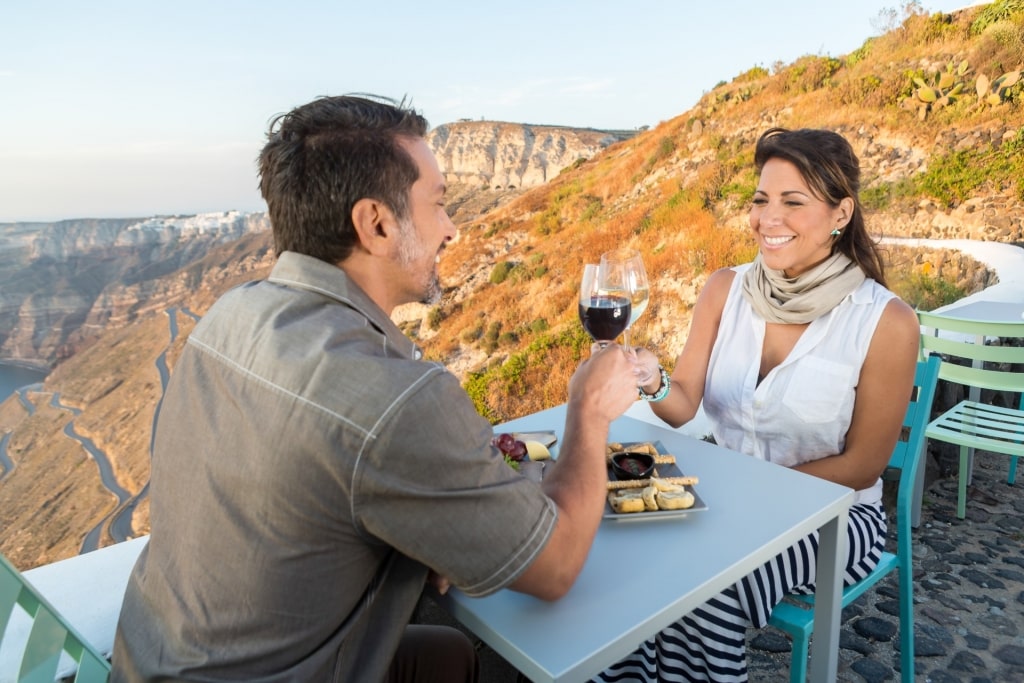
Wine tasting in Santorini
Santorini produces some exceptional wines, too, with the island’s grapes thriving on the volcanic soil. Try the nearby Santos Winery, where libations include the crisp and citrusy white Assyrtiko, the vibrant ruby-red Mavrotragano, and silky sweet Vinsanto.
For beer lovers, Ftelos Brewery Santorini produces six craft beers. Stop by the sleek brewery for a tour and tasting with cheeses, herb and caper pesto, potato salad, and a braised veal dish with apricot and truffle jelly paired with the different drinks.
For seafood with sea views, book a table at Fira’s Volcano Blue for dishes of fried feta cheese drizzled with honey, eggplant with sun-dried tomatoes, and smoked fava beans with octopus.
Best Time to Visit Fira, Greece
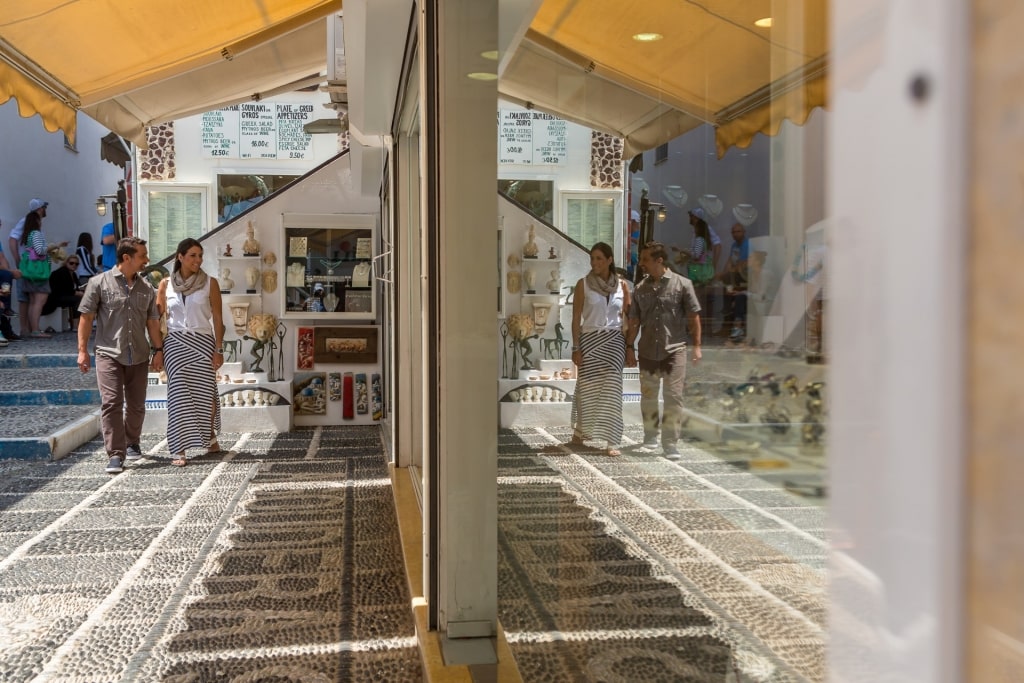
Fira
The best time to visit Fira for decent weather is between May and October.
With a long, drawn-out summer and sultry temperatures reaching as high as 90°F during the peak of summer, July and August are best suited to travelers who enjoy their vacations in hot weather.
If you prefer warm (but not too hot) days to enjoy exploring in pleasant temperatures, consider visiting in May, June, September, or October.
For quieter periods, May and October are advised. If you want to swim in the sea, the island’s red, gold, and black sand beaches are accessible from Fira by bus or taxi, and the water is warm right up until October.
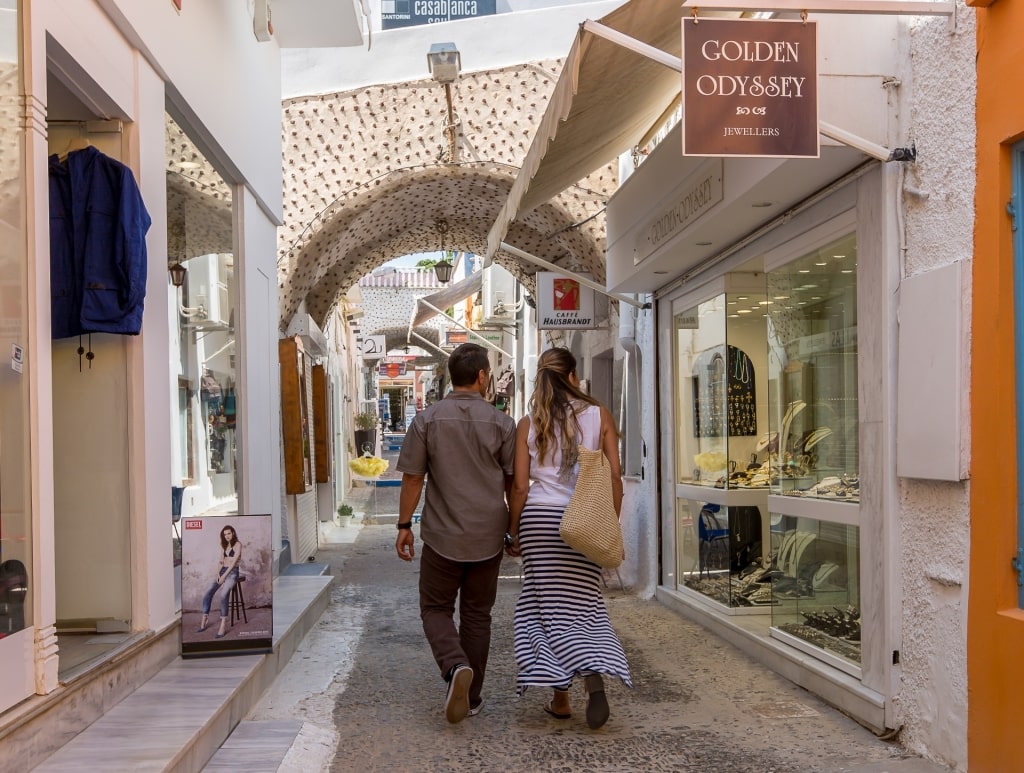
Fira
Fira, Greece, is a wonderful destination that offers a blend of culture, history, sunshine, and scenery. Explore this stunning Greek town on a cruise to Santorini with Celebrity.
